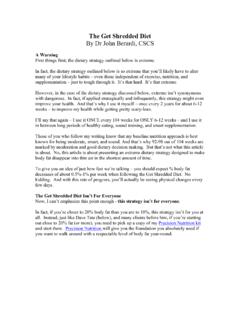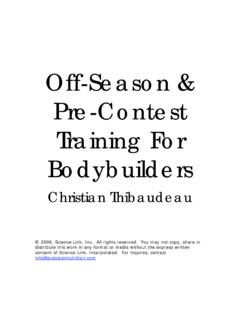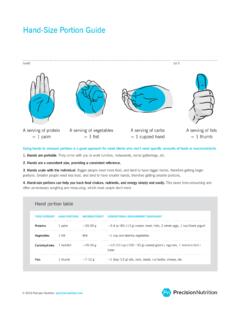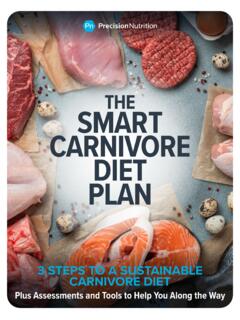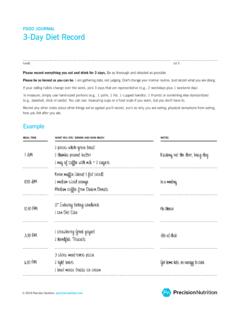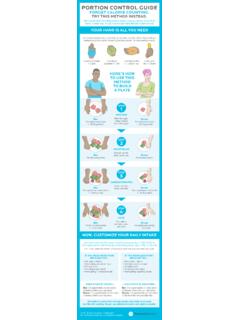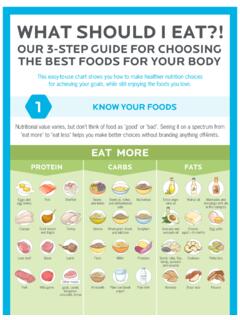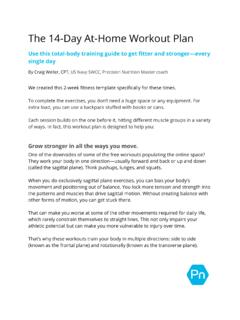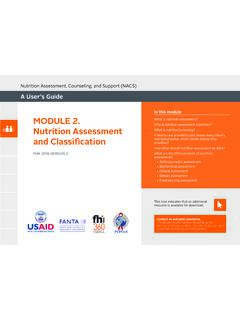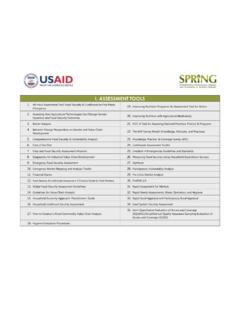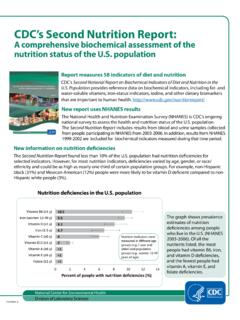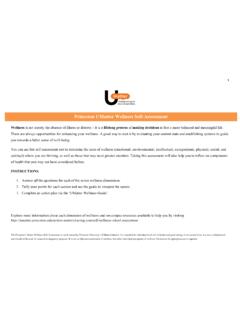Transcription of Client Assessment Forms - Precision Nutrition
1 THIRD MANUALThe Essentials of Sport and Exercise Nutrition Precision NutritionBy John Berardi, PhD, CSCS Ryan Andrews, MS, MA, RDBrian St. Pierre, MS, RD, CSCSK rista Scott-Dixon, PhDHelen Kollias, PhD, CSCSC amille DePutterFORMSCERTIFICATION MANUALThe Essentialsof Sport andExercise Nutrition Client Assessment FORMSC opyright 2016 by Precision NutritionAll rights reserved. No part of this book may be reproduced or transmitted in any form or by any means, electronic or mechanical, including photocopying, recording, or by any information storage and retrieval system, without written permission from the by Precision Nutrition , Nutrition Forms | Introduction When to use the formsOutcome-based decision s at the heart of everything you do as a You gather data.
2 2. You analyze it. 3. You decide what to do next, based on the the saying goes: If you re not assessing, you re guessing. Indeed, the best coaches are always gathering, analyzing, and using data to make informed, outcome-based decisions. However, sometimes all that data can feel Client comes to you with: different life experiences and a different personality; different wants and needs; different health conditions, movement capacities, and eating habits; different problem-solving abilities; and different attitudes about change and trying new a coach, you need to triage to understand what s most important, right now, for each unique Client .
3 Triaging helps you focus on first things first and set the right priorities. But how do you know: What information to gather? And when? What questions to ask? And how? The right way to discuss Assessment and analysis with clients? How to walk them through the process step by step?Simple. We ve already done the work for Assessment Forms in this package will help you get to know your Client better, and help you make better, evidence-based decisions about your coaching them, you ll learn more about your Client s: Physiological indicators This includes blood work, other lab tests, digestive function, and immunityPRECISION Nutrition Forms | Introduction When to use the Forms Body composition and measurements This includes height, weight, body girths, lean mass, and body fat Other health needs This includes known allergies or food intolerances, medication use, other health problems, and the other health care providers they work with Function and physical capability This includes mobility, daily-life tasks, and athletic performance Psychological state and mindset This includes readiness for change, resilience.
4 And problem solving Environment and lifestyle This includes social support, family, work hours and demands, and travel Goals and desired outcomes This includes a specific goal weight or body composition change, decreased medication usage, improved performance measures, and improved relationship with foodBuild your coaching information database by using these tools and techniques. And use it to generate strategic plans that your clients can stick with, and that you can feel good WITH THE suggest you begin with The PN Initial Assessment and Triage Questionnaire, which covers: The Client s perspective This includes expectations, goals, self-identified limiting factors, willingness to change, and what behaviors they d like to focus on or change.
5 Social factors This includes social support, stress, and relationships. Health indicators and conditions This includes injuries, medication use, and digestion. Lifestyle factors This includes how often they see the doctor, whether they smoke, how they spend their time, and how their kitchen is set the Client to fill it out beforehand if possible and bring it to your first session together. Filling out Forms in advance gives them time to think and remember that first session, discuss their responses with them. Look for more information, and try to understand their situation as much as you can. Going through the Forms together gives you both an opportunity to fill in any gaps and make sure you re both on the same good initial Assessment helps you match your coaching plan to what the Client can actually understand, manage, and do.
6 This ensures that your clients go steadily from success to success, rather than swinging wildly from resistance to anxiety to initial Assessment also helps you to give clients an objective appraisal of what and how they re doing, helps you identify clients who are at risk for illness and / or injury, and helps you determine if you need to refer a Client out, either because they fall outside your scope of practice or because the relationship would be a mismatch (remember, referring out is an important and valuable option). Precision Nutrition Forms | Introduction When to use the formsAfter the first session, if you feel like the Initial Assessment and Triage Questionnaire raises some additional questions you d like to answer immediately, use some of the questionnaires and worksheets included here.
7 These may help you: identify what s most important to your Client right now; learn what progress means for your Client ; identify specific ways to track progress with your Client ; collaborate on next actions together; ensure that your Client is able to execute any tasks you give them; and / or focus on a particular area of interest, such as past / current health problems, sport Nutrition , readiness for change, planning and time useKeep in mind: You don t have to use all of these. We recommend you only try one at a time. Feel free to use them throughout the entire coaching process. Only use a form if you find it useful when making coaching AND Client Forms Many of the Forms have coach and Client coach version is like a teacher s guide to a classroom textbook.
8 It explains what the form is used for, how to talk about the form with your clients, and why you might ask for certain types of information from your clients. Coach versions have the symbol Client version is what your clients will see. Simple, to the point, only asking what s needed for each topic. You can give these to your Client to fill out at home and bring to your suggest you review the coach version of each form before handing the Client version out. This will help you feel ready and able to explain each form. This will, in turn, help your clients better understand what you re hoping to accomplish and buy in to the Nutrition Forms | Introduction When to use the formsIndex of Precision Nutrition formsHere s a list of all the worksheets, assessments and questionnaires contained in this package, including what each is used of formsWORKSHEET, Assessment , OR QUESTIONNAIREWHAT IT S USED FORVERSIONSPN Initial Assessment and Triage QuestionnaireHelps you match your coaching plan to what the Client can actually understand, manage, and do.
9 Also helps you to give clients an objective appraisal of what and how they re doing, helps you identify clients who are at risk for illness and / or injury, and helps you determine if you need to refer a Client version1 Client version24 Crazy Questions WorksheetFor helping clients think through the benefits of the status quo and what they ll have to give up to versionA-B-C WorksheetFor negotiating which specific exercises and / or foods clients can / will do or eat. (At least right now.)Coach versionClient versionAll-or-None WorksheetFor helping clients see choices as a continuum versus all or versionClient versionAthletic Nutrition Needs QuestionnaireFor understanding a Client s training goals, training volume, current recovery practices, and current Nutrition versionClient versionBaseline Blood Chemistry AssessmentFor coaches who find blood work useful in the decision-making versionBehavior Awareness WorksheetFor helping clients change unwanted habits and behaviors (such as stress eating).
10 Client versionBody Measurements FormFor tracking body composition in clients who might benefit from regular versionEating Habits QuestionnaireFor learning more about a Client s eating versionClient version1 Coach versions contain scripts or background information that that you can use to either explain the form to your clients, or to understand why we ve asked certain questions. It s like a Teacher s guide for school teachers. 2 Client versions of Forms are for the clients to take home and fill out Nutrition Forms | Introduction When to use the formsWORKSHEET, Assessment , OR QUESTIONNAIREWHAT IT S USED FORVERSIONSFOOD JOURNALS3-Day Diet RecordFor recording exactly what a Client is eating; most often for Level 2 version80% Full Meal JournalFor helping clients learn how to eat until satisfied versus stuffed and tracking progress in this versionAthletic Performance Indicators & Athlete Nutrition JournalFor correlating mood, energy, and motivation with dietary intake in hard-training athletes.
